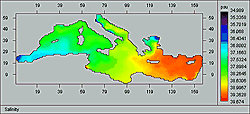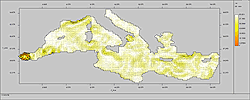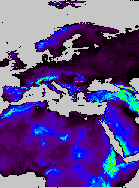Databases used are the Seasonal gridded Data Sets (salinity, temperature, velocities of the Mediterranean Sea) and the ETOPO5 data base, which contains gridded data representing bathymetries and elevations from all over the world.
You can download the data from the MODB server
![]()
In our server we put the data files used in the examples.


